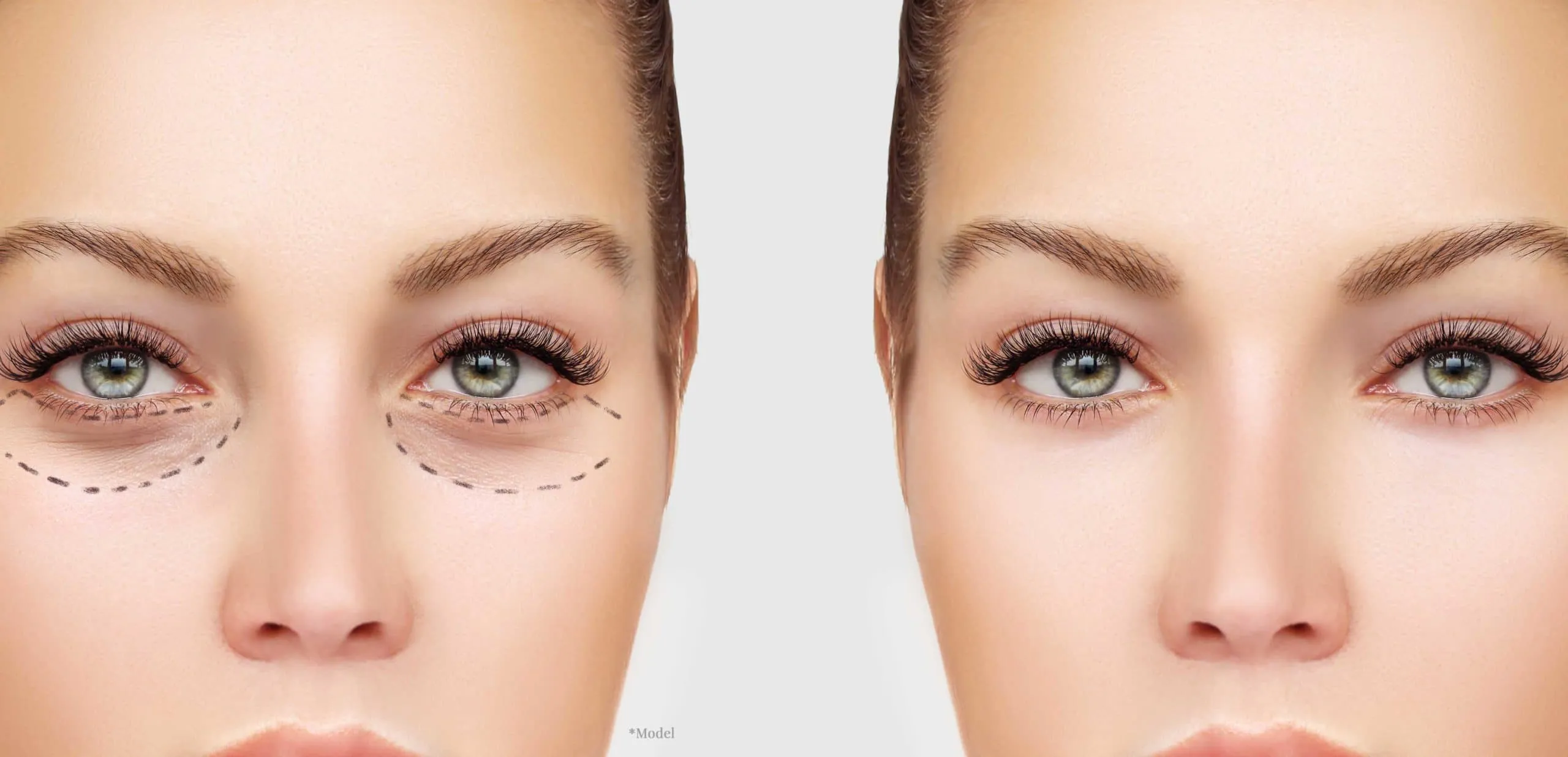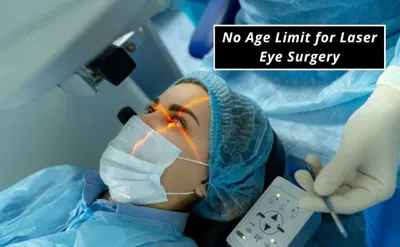Eye Plastic Surgery: Enhancing Vision and Aesthetics
The eyes are often referred to as the "windows to the soul," playing a crucial role in facial expression and overall appearance. However, factors like aging, genetics, or medical conditions can lead to drooping eyelids, puffiness, or other concerns that affect both vision and self-confidence. Eye plastic surgery, also known as oculoplastic surgery, offers solutions to address these issues, combining medical expertise with aesthetic precision. In this article, we’ll explore the types of eye plastic surgery, their benefits, the procedures involved, and what to expect during recovery.

What is Eye Plastic Surgery?
Eye plastic surgery is a specialized field that focuses on the eyelids, eyebrows, tear ducts, and surrounding facial structures. It is performed by ophthalmologists or plastic surgeons with specialized training in both functional and cosmetic eye procedures. These surgeries can improve vision, correct deformities, and enhance the appearance of the eyes, helping patients look more youthful and refreshed.
Types of Eye Plastic Surgery
There are several types of eye plastic surgery, each designed to address specific concerns:
Blepharoplasty (Eyelid Surgery):
Upper Blepharoplasty: Removes excess skin and fat from the upper eyelids to correct drooping and improve vision.
Lower Blepharoplasty: Reduces puffiness, bags, and wrinkles under the eyes for a more youthful appearance.
Ptosis Repair:
Corrects drooping eyelids caused by weakened muscles, improving both vision and appearance.
Brow Lift:
Elevates sagging eyebrows to reduce forehead wrinkles and create a more alert, youthful look.
Ectropion/Entropion Repair:
Corrects eyelids that turn outward (ectropion) or inward (entropion), which can cause irritation and vision problems.
Tear Duct Surgery:
Addresses blocked tear ducts, which can cause excessive tearing or infections.
Orbital Surgery:
Treats issues related to the eye socket, such as fractures or tumors.
Cosmetic Procedures:
Includes non-surgical treatments like Botox or dermal fillers to reduce wrinkles and enhance the eye area.
Benefits of Eye Plastic Surgery
Eye plastic surgery offers both functional and aesthetic benefits:
Improved Vision: Procedures like blepharoplasty and ptosis repair can remove obstructions and enhance eyesight.
Youthful Appearance: Reducing puffiness, wrinkles, and sagging skin can make you look more refreshed and vibrant.
Boosted Confidence: Enhancing the appearance of your eyes can improve self-esteem and overall quality of life.
Corrected Medical Issues: Surgery can address conditions like ectropion, entropion, or blocked tear ducts, improving eye health.
The Eye Plastic Surgery Procedure
The process for eye plastic surgery varies depending on the type of procedure but generally follows these steps:
Consultation:
Your surgeon will evaluate your concerns, medical history, and goals to determine the best approach.
Pre-operative instructions, such as avoiding certain medications, will be provided.
Anesthesia:
Most eye surgeries are performed under local anesthesia with sedation, though general anesthesia may be used for more complex procedures.
Surgery:
For blepharoplasty, incisions are made along the natural creases of the eyelids to remove excess skin, fat, or muscle.
For ptosis repair, the eyelid muscles are tightened to lift the eyelids.
For brow lifts, incisions may be made along the hairline or endoscopically to lift and reposition the eyebrows.
Recovery:
The procedure typically takes 1-2 hours, and patients can return home the same day.
Swelling, bruising, and mild discomfort are common but subside within a week or two.
Who is a Good Candidate for Eye Plastic Surgery?
Eye plastic surgery is suitable for individuals who:
Have drooping eyelids that impair vision
Are bothered by under-eye bags, puffiness, or wrinkles
Have eyelid conditions like ectropion or entropion
Are in good overall health and have realistic expectations
Do not smoke or are willing to quit before and after surgery
A consultation with a qualified surgeon will help determine if you’re a good candidate.
Recovery and Aftercare
Recovery from eye plastic surgery is relatively quick, but proper aftercare is essential for optimal results:
Apply cold compresses to reduce swelling and bruising.
Keep your head elevated while sleeping to minimize swelling.
Avoid strenuous activities for at least a week.
Use prescribed eye drops or ointments to prevent dryness and infection.
Attend follow-up appointments to monitor healing.
Most patients can return to work and normal activities within 7-10 days, with full results visible within a few weeks.
Why Choose Eye Plastic Surgery?
Eye plastic surgery is a transformative solution for both functional and cosmetic concerns. Whether you’re struggling with impaired vision due to drooping eyelids or simply want to rejuvenate your appearance, these procedures can help you achieve your goals. With advancements in techniques and technology, eye plastic surgery has become safer, more effective, and accessible than ever before.
Conclusion
Eye plastic surgery offers a unique combination of medical and aesthetic benefits, helping patients see better and look more youthful. If you’re considering this procedure, consult with a qualified oculoplastic surgeon to discuss your options and create a personalized treatment plan. With expert care and a commitment to aftercare, you can enjoy clearer vision, a refreshed appearance, and a renewed sense of confidence. Your eyes deserve the best—let eye plastic surgery help you shine!
Featured Articles
 The Life-Changing Benefits of Laser Eye SurgeryImagine waking up in the morning and seeing the world with crystal-clear vision, without the need for glasses or contact lenses. For millions of people across the United States, this dream has become a reality thanks to laser eye surgery. With advancements in medical technology, laser vision correction has become a safe, effective, and long-term solution for those struggling with nearsightedness, farsightedness, and astigmatism.
The Life-Changing Benefits of Laser Eye SurgeryImagine waking up in the morning and seeing the world with crystal-clear vision, without the need for glasses or contact lenses. For millions of people across the United States, this dream has become a reality thanks to laser eye surgery. With advancements in medical technology, laser vision correction has become a safe, effective, and long-term solution for those struggling with nearsightedness, farsightedness, and astigmatism. Laser Eye Surgery: Understanding Modern Vision CorrectionLaser eye surgery provides a solution for correcting vision issues such as nearsightedness and astigmatism. Discover how procedures like LASIK can improve your sight and reduce the need for glasses or contacts.
Laser Eye Surgery: Understanding Modern Vision CorrectionLaser eye surgery provides a solution for correcting vision issues such as nearsightedness and astigmatism. Discover how procedures like LASIK can improve your sight and reduce the need for glasses or contacts. Dental Implants: A Modern Solution for a Confident SmileMissing teeth can affect more than just your appearance—they can impact your ability to eat, speak, and maintain oral health. Fortunately, dental implants have emerged as a revolutionary solution, offering a permanent and natural-looking way to replace missing teeth. Whether you’ve lost a tooth due to injury, decay, or aging, dental implants can restore your smile and improve your quality of life. In this article, we’ll explore what dental implants are, their benefits, the procedure involved, and why they might be the right choice for you.
Dental Implants: A Modern Solution for a Confident SmileMissing teeth can affect more than just your appearance—they can impact your ability to eat, speak, and maintain oral health. Fortunately, dental implants have emerged as a revolutionary solution, offering a permanent and natural-looking way to replace missing teeth. Whether you’ve lost a tooth due to injury, decay, or aging, dental implants can restore your smile and improve your quality of life. In this article, we’ll explore what dental implants are, their benefits, the procedure involved, and why they might be the right choice for you.